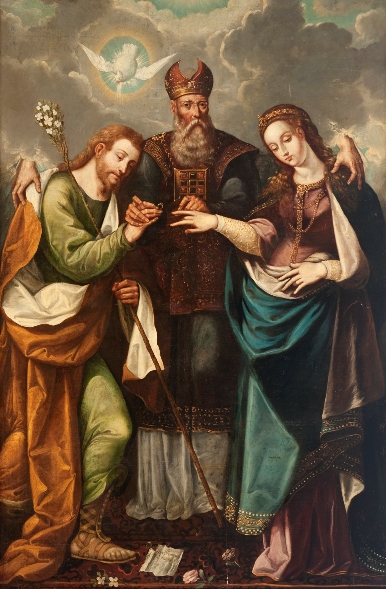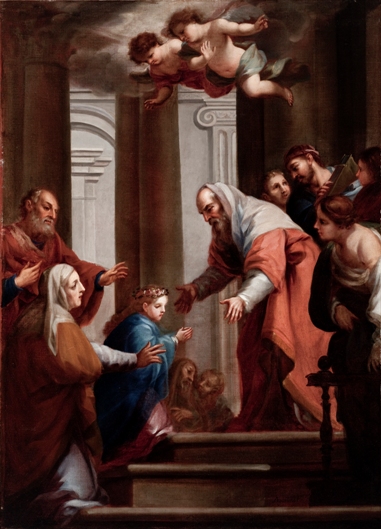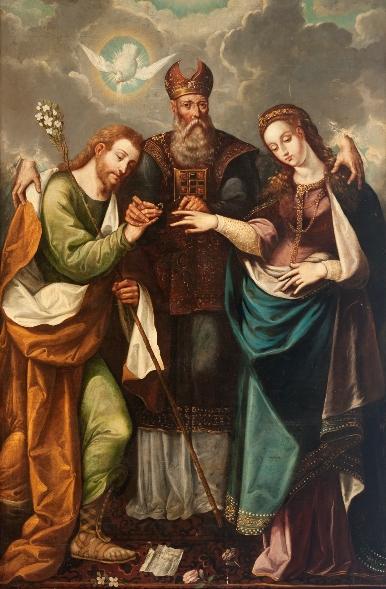Yesterday we added to the collection two paintings that mark very different moments in the history of New Spanish (Mexican) painting. The first is an imposing work by Pedro Ramírez that portrays the Marriage of the Virgin. Ramírez is a seminal artist from the second half of the seventeenth century who descended from a prominent Sevillian family of sculptors and altarpiece-makers. His bold compositions are characterized by stark contours and firm modeling and a high degree of naturalism.

Pedro Ramírez, The Marriage of the Virgin, 1668, purchased with funds provided by the Bernard and Edith Lewin Collection of Mexican Art Deaccession Fund
This scene is based on apocryphal accounts of the marriage of the Virgin in the Golden Legend. While the subject was not all that common in Europe, it became popular in New Spain, where it was taken up by some of the best brushes of the time. Here, the Jewish priest in the center is flanked by the holy couple. Among the most striking details, are the priest’s hands, with every knuckle clearly drawn. The scene is presided over by the Holy Ghost, beautifully rendered within a circle of light, as two majestic hands descend from the heavens to embrace the couple and sanctify the union. This is an unusual detail that recurs in all of the New Spanish paintings of the subject, but which is conspicuously absent from the European models. It is possible that the artists shared a common visual source (either a print or a painting not yet identified), but it is even more likely that they were looking at each others’ work, demonstrating the significance of a local pictorial tradition within Mexico itself.
By the early eighteenth century a major stylistic change was introduced in New Spain. The firm modeling seen in works such as Ramírez’s is replaced by a softer, more vaporous style. Juan Francisco Aguilera is credited along with the brothers Juan and Nicolás Rodríguez Juárez with propelling this pictorial shift. Despite Aguilera’s importance, we still lack the most elemental information about his origin and training—if he was born in Spain or Mexico. We do know, however, that by 1722 he was in Mexico City, where he was a member of the first academy of painting established by the Rodríguez Juárez brothers, and hence part of this influential modernizing group.

Juan Francisco de Aguilera, The Presentation of the Virgin to the Temple, c. 1720, Purchased with funds provided by the Bernard and Edith Lewin Collection of Mexican Art Deaccession Fund
The Presentation of the Virgin to the Temple, signed in the lower center, exemplifies Aguilera’s unmistakable style, especially the fluid and soft rendition of the two cherubs who hover benevolently above the scene. The scarcity of known works by Aguilera makes this acquisition highly significant in terms of understanding the artist’s development. The two works by Ramírez and Aguilera together anchor our growing collection of Spanish colonial painting by allowing us to tell the story of the transition of seventeenth and eighteenth century painting in New Spain. We could have not asked for better examples to do so.
Ilona Katzew, Curator and Co-Department Head, Latin American Art



